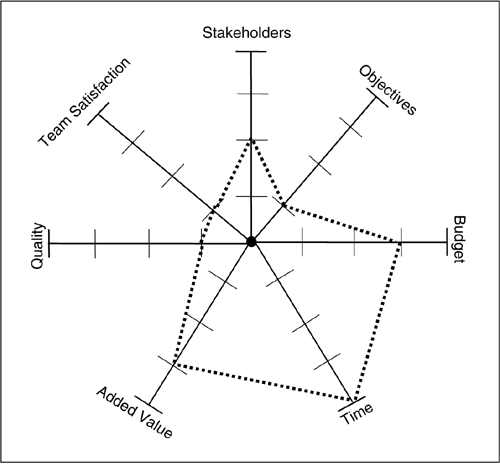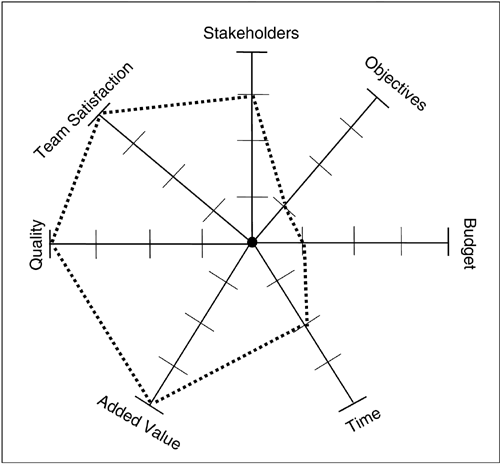The Swiss Army Knife
| As explained in Chapter 7, the slider tool not only provides a tool for modeling expectations but also has three other powerful uses:
Let's assume that we are undertaking a project to implement a new recruiting process for our company. We convene a RAP session and, after a briefing from our sponsor, we complete the slider tool. The result is shown in Figure 23.2. Figure 23.2. Project recruit initial sliders To summarize, it is agreed that the key drivers for our project are that the team, quality, and added value are critical success factors, together with the degree of satisfaction of the stakeholders (many of whom will be impacted by the new recruitment process). Our project is happily underway when our company decides to bring forward some management initiatives including cost constraints. As a result, the budget and time frame for our project become more important to our sponsor. We conduct another RAP and the resulting sliders are shown in Figure 23.3. Figure 23.3. Project recruit revised sliders Compare our two different sliders for the same project and answer this question: Is it the same project? Clearly, our scope and objectives have not changed, but we are now facing a completely different project dynamic, risk, and success criteria. With just one diagram and tool you can quickly take a snapshot of your project. We love the sliders! Also, you can see how the same diagram can be used to review the status of the project: Have the sliders changed? Finally, the more sliders that are "on" for your project, the higher the risk of your project. |
EAN: 2147483647
Pages: 136

